MORE FROM SCOTLAND MAGAZINE
Shetland Isles: Food and drink
Discover how the residents of the Shetland Isles are reclaiming the produce from their seas and fields for themselves and their guests
Words and photos by Sally Coffey
Shetland Isles mussels and Shetland lamb have long been considered a mark of quality, with shipments regularly leaving here, destined for the kitchens of some of London’s finest restaurants. For a long time, with the focus solely on export, both residents and visitors to the Shetland Isles have missed out on enjoying local produce in Shetland itself.
However, an appetite for food provenance and lower food miles, coupled with a vulnerability exposed by the Covid-19 pandemic, has speeded up the desire among some to make the islands more self-sufficient and ensure a decent amount of produce remains on the islands for all to enjoy.
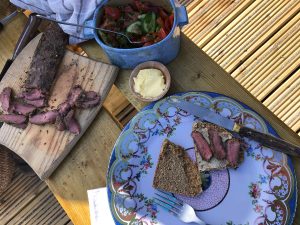
And so, A of Taste Shetland – an offshoot of member organisation Shetland Food and Drink, which promotes Shetland’s produce to the world – is on a mission to encourage both residents of and visitors to the isles to eat local. And it’s about time.
The Shetland Isles, an archipelago that lies between the Orkney Islands, the Faroe Islands, and Norway, includes the largest island of Mainland and more than a dozen other inhabited islands, from Unst in the far north to Fair Isle in the south.
Most people arriving in Shetland come into Lerwick on Mainland, either by ferry from Aberdeen or by air. For the former an early morning stop-off at the Scandinavian-style Fjarå Café Bar, overlooking a bay towards the isle of Bressay, is almost obligatory.
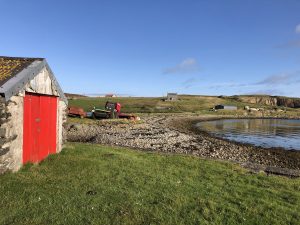
And so, shortly after disembarking in Shetland, I find myself here with a cup of coffee lifting the fog from the previous night’s ferry crossing, gazing across the water as a seal pops its head about the surface.
I don’t have long to ponder the blue and green landscape and my wildlife welcome though, as I have come to meet with lots of producers on the islands, and my first stop is Transition Turriefield, a self-sufficient smallholding with chickens and ducks way over west on Mainland, near Sandness.
At Transition Turriefield, I’m met by owners Penny Armstrong and Alan Robertson, who have been growing their own fruit and vegetables for decades.
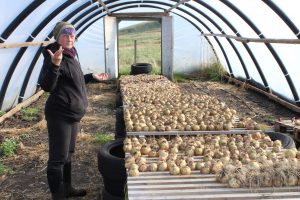
Once, growing for one’s own consumption in Shetland would have been common practice: “Around here, every house would have had a plot where they’d grow some rice, tatties and maybe some carrots and neaps and stuff,” Penny tells me.
When Penny and Alan arrived at their small holding in 1999, they set out to try and revive the tradition, first by growing their own supply and then by teaching other people how to grow here.
Polycrubs – storm-strength polytunnels built to withstand the harsh conditions here, can be seen dotted across the landscape, and one of Penny and Alan’s proudest achievements has been teaching local schools how best to use them.
Special measures to help things grow in Shetland is no new thing: look closely as you travel around and you will see the stone outlines of plantie crubs – circular enclosures used at least as far back as the 17th century to grow Shetland kale, Scotland’s oldest locally grown vegetable variety.
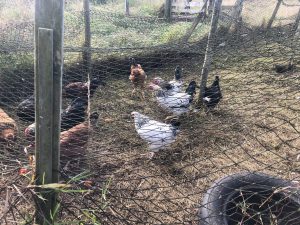
Penny and Alan grow Shetland kale (or brassica), and visitors can pop by and pick up some of their homegrown produce from the honesty box at the farm gates. They also sell a certain number of vegetable boxes to the local community, and supply both the Eid Community Co-op in Aith, and Scoop Wholefoods in Lerwick.
Like Penny and Alan, Rebecca Pritchard runs an honesty box system for anyone who happens to be driving past her gluten-free cake box, Tabnabs and Treats, by her Silly Sheep Farm, near the village of Walls. You can nibble your cake as you say hello to some of the many sheep kept here, and pop into the wool shop if it’s open to buy some bright, dyed wool and other local gifts.
Honesty boxes are a big thing in Shetland – the original cake fridge in East Burrafirth is such a tourist hotspot that it’s signposted, but I see lots more on my travels, including one selling eggs and reels (i.e. CDs of traditional Scottish music) outside the village hall in Uyeasound on the isle of Unst.

The reason I find myself in Uyeasound is for another Shetland food-related tradition – the Sunday Teas, whereby on Sundays (especially during the summer months), village halls provide home bakes, soups, and sandwiches for a bargain price, with proceeds going to good causes. It’s a great way to bring communities together and if you check the Shetland Times you can find out about any coming up.
On Unst, I was lucky enough to stay in Belmont House, an 18th-century manor house overlooking the small ferry port that you arrive at from Yell, where owner Martin Wilson is keen to introduce his guests to the culinary delights found on the isles.

Guests can stay in one of four Georgian-style bedrooms and dinner is a communal affair in the refined dining room, where Martin serves up the food he has been cooking all day, using ingredients sourced locally, from reestit mutton soup – a hearty stew-like dish – with the mutton coming from Scalloway Meat Company, and lots of lovely seafood, which he buys in from Island Fish Ltd.
It’s certainly a good advertisement for the quality of the ingredients found here and the traditional way of cooking them – the sassermaet served at breakfast (a patty-like dish usually made of Shetland beef) was especially tasty.
While on Unst you should also pay a visit to Shetland Reel Gin, a small distillery near the SaxaVord site where building work for the UK’s first spaceport for rocket launches is underway. Shetland Reel Gin always develops special branded gin for the Up Helly Aa fire festivals held each winter, as does Lerwick Brewery, back on Mainland – the UK’s most northerly craft brewery, run by the friendliest of teams.
En route to the brewery I stop-off at a Shetland institution, Frankie’s Fish and Chips, for lunch. Here, everything is locally and sustainably sourced, and as well as a light, crispy batter around freshly caught, melt-in-your mouth haddock, there are daily specials (depending on what’s been landed by fishermen), plus mussels harvested nearby.
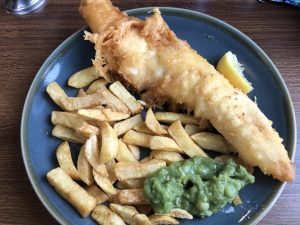
A different seafood experience is enjoyed the next day when I meet David Parham of The Hand-Made Fish Company in the tasting shed next to his house on the south of Mainland. Here, there is no batter or side accompaniment – though crackers are offered for those who wish for them – as David believes his cold oak-smoked fish is best enjoyed direct from a piece of flint, and i can’t argue with that. Visitors to his tasting sessions can hear all about the work that goes into his hands-on smoked fish, from making the sawdust himself to his painstaking filleting process, which he has been doing for almost 60 years.
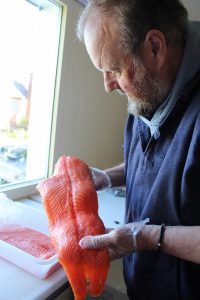
Most of the restaurants worth dining in while you are in the Shetland Isles – C’est La Vie, The Dowry and No. 88, for instance – are located on Commercial Street in Lerwick and they all use ingredients sourced right here on the islands, allowing guests to get a true taste of Shetland in a warm and comfortable setting.
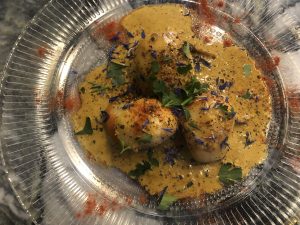
If you’d rather cook for yourself in your holiday home, or perhaps take some produce home with you, then Scoop Wholefoods is the place to go. The shop specialises in Shetland produce, including Shetland lamb and Native Shetland beef (a very rare breed of cattle) from organic Urudale Farm. Butcher Ronnie Eunson tells me Native Shetland beef is “very flavoursome” due to the fact the cattle are very slow maturing and so can absorb and collect a lot more nutrients throughout their life.
My last stop on my Shetland Isles food and drink odyssey is with Marian Armitage, an award-winning cook, author and co-founder of Shetland Food and Drink, at her family home in Sumburgh, on Mainland.
Marian takes me out for a rather blustery picnic of peerie oatcakes, cold meats, and Fair Isle cherries by Sumburgh Lighthouse, where we talk about the need to cherish and preserve Shetland’s food heritage.
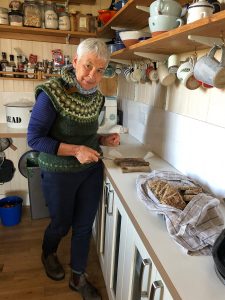
Marian used to host cookery classes at her home. Sadly she’s now stopped doing these, but her books give a good, warm-hearted introduction into Shetland cooking and the recipes are ones that can be followed (and adapted, if necessary, at home) to include all the family.
Today, with people like Penny, Martin, David, Ronnie, and Marian singing the praises of locally sourced produce, Shetland food and drink is available on the Shetland Isles more than ever, and the more we demand it as visitors, the more we can help protect these vital Shetland industries for the future.
This is an extract. Read the full article in the March/April 2024 issue. Available to buy from Friday 16 February here.
Read more from Scotland Magazine:

SCOTLAND MAGAZINE
Published six times a year, every issue of Scotland showcases its stunning landscapes and natural beauty, and delves deep into Scottish history. From mysterious clans and famous Scots (both past and present), to the hidden histories of the country’s greatest castles and houses, Scotland‘s pages brim with the soul and secrets of the country.
Scotland magazine captures the spirit of this wild and wonderful nation, explores its history and heritage and recommends great places to visit, so you feel at home here, wherever you are in the world.












